Creating a Discovery Area with Tinkerlab
I was so excited to recently receive a copy of the wonderful Rachelle Doorley of Tinkerlab‘s brand new book, Tinkerlab: A Hands-On Guide for Little Inventors. This book is filled with activities that encourage young children to tinker, explore and think creatively, and I love that the hands-on activities are interspersed with nuggets of wonderful wisdom from Rachelle and a range of fellow educators and influencers passionate about young children’s creativity and learning. Here’s a snippet from her interview with Parul Chandra of Bing Nursery School;
How to Set Up a Discovery Area
An Interview with Parul Chandra, teacher, Bing Nursery School, Stanford UniversityQ: The discovery area of your classroom seems to shift with the seasons, and it’s always filled with inspiring objects. Can you tell us about this area and how you organize it?
A: Our discovery area consists of a low table with plenty of baskets and bins that are thoughtfully filled with seasonal and natural materials that act as provocations. We’ve found that the discovery area is most meaningful when the materials relate to the children’s experiences, so we often display objects that connect to the time of year or include nature-based discoveries made by the children. Seasonal additions could be pine cones, leaves, shells, and different colors of sand. We include tools such as big jars, binoculars, wooden trays with dividers and maps for children to pick up for outdoor explorations. The trays can be numbered or categorized in different ways to encourage further classification and exploration. There are also plenty of interesting papers and notepads for children to use in recording their questions, observations and ideas.
The table is accessible, always available and child-centered. The goals in the space are set by the child, and we see a lot of experimentation, hands-on exploration, and understanding of materials but setting challenges and asking questions.
From Tinkerlab by Rachelle Doorley, © 2014 by Rachelle Doorley (page 186). Reprinted by arrangement with Roost Books, an imprint of Shambhala Publications, Inc., Boston, MA. www.roostbooks.com.
I was so inspired by this particular interview that I have actually moved our art table to sit by our big playroom window so that my girls can look outside and feel inspired by our backyard. The light from the Winter sun in this particular spot is lovely in the morning.
I exchanged the big tub of playdough tools and tray of sparkles for some rocks and wooden rings. These I will change out after a few days, or a week, adding and subtracting natural elements as I watch and see how my girls’ interests are inspired.
More from Rachelle and Chandra, for those who would also like to create a discovery area at home;
Q: What advice do you have for someone who would like to set up a discovery table at home?
A:
- Have a low table with bins or baskets to collect objects and provocations.
- Include tools for inquiry and exploration, such as binoculars, maps, and clipboards with pencils.
- Display, sort and organize seasonal objects.
- Display a quantity of natural objects, such as potatoes or rocks, along with a book about each object.
- Set up an intriguing provocation for children to discover in the morning, For example, if your child shows an interest in tree branches, gather a collection of twigs, sticks, and branches. Add paper to make rubbings.
From Tinkerlab by Rachelle Doorley, © 2014 by Rachelle Doorley (page 187). Reprinted by arrangement with Roost Books, an imprint of Shambhala Publications, Inc., Boston, MA. www.roostbooks.com.
I love the idea of including a divided tray for sorting and classifying so I dug out one that I had packed away and have added it to our table. I have also added a magnifying glass, a simple bucket of pencils and a pair of child friendly scissors, and we always have sketchbooks, notebooks and loose paper on hand.
Just as the location of your discovery space is important, I would also suggest thinking about all of the elements of the space as you never know what will inspire their questions and exploration. We have these recycled, decorated CD’s (shown below) hanging in ours and my girl’s both love the spots of reflected morning light that dance across the walls as the CDs spin.
Your discovery area doesn’t need to be big or fancy – just think about what sorts of objects, especially natural objects, will captivate and interest your child. Keep it simple and uncluttered with a plan to swap things around to keep it interesting and engaging. You can also regularly exchange the creative mediums you include in the space to encourage a range of responses – playdough, clay, felt tipped markers, oil pastels or crayons, watercolour paints or pencils.
Tinkerlab: A Hands-On Guide for Little Inventors includes 55 playful activities and experiments. Divided into four categories – designing, building, concocting and discovering – you’ll find creative activities, science experiments and investigations, construction challenges, sensory explorations and more!
Rachelle has presented each of the activities with simple instructions and suggestions for presenting the materials as an invitation, and long time Childhood 101 readers will know how I love an invitation! I appreciate that most of the activities only require common household items, making it really easy for parents and children to dip in to find and set up an exploration at a moment’s notice. This really is a wonderful resource for facilitating young children’s experiences tinkering, experimenting and creative thinking.
– GIVEAWAY –
Open to residents of Australia, United Kingdom, Canada & the United States
One lucky Childhood 101 reader will win their very own copy of Tinkerlab: A Hands-On Guide for Little Inventors by Rachelle Doorley.
This is a game of skill and entries will be judged based on creativity and originality. To enter, leave a comment on this post in response to this question:
Design, Build, Concoct or Discover? – Tell me about your little tinker’s most recent experiment.
Entries close 5PM AEST, 27th July, 2014.
To purchase your own copy of Tinkerlab (and believe me, even if you win the prize copy, this book will make a marvellous gift), it is now on sale via;
Amazon.com | BookDepository.com | Fishpond.com.au
Barnes & Noble | IndieBound | Roost Books
Be sure to check it out.

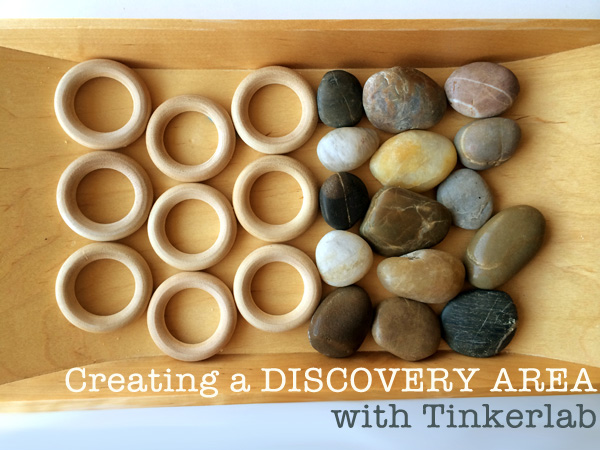
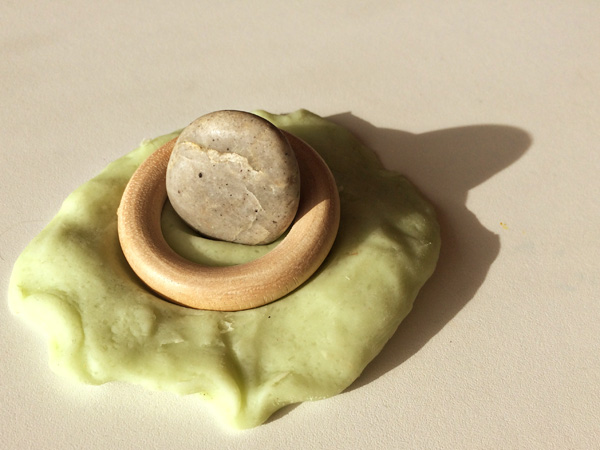
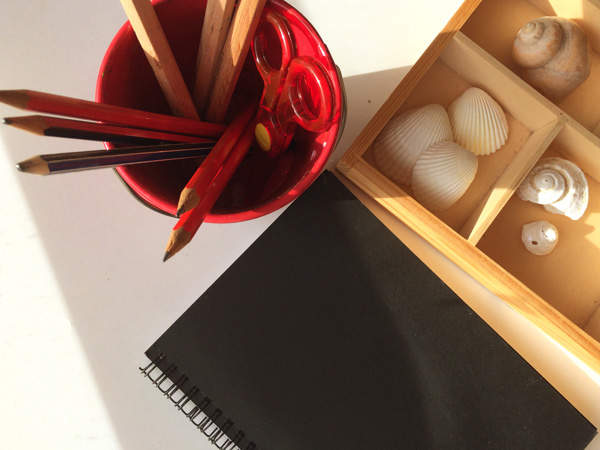
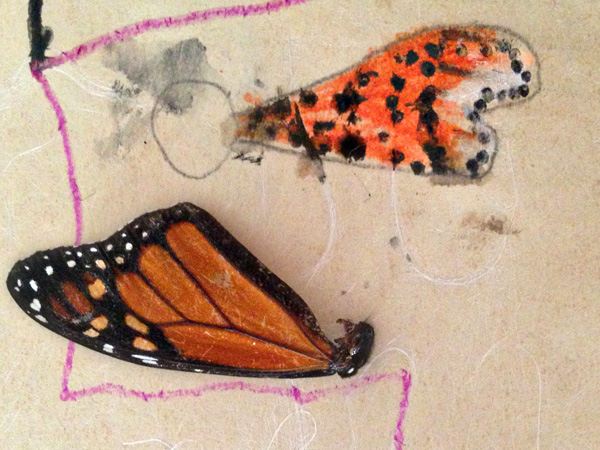
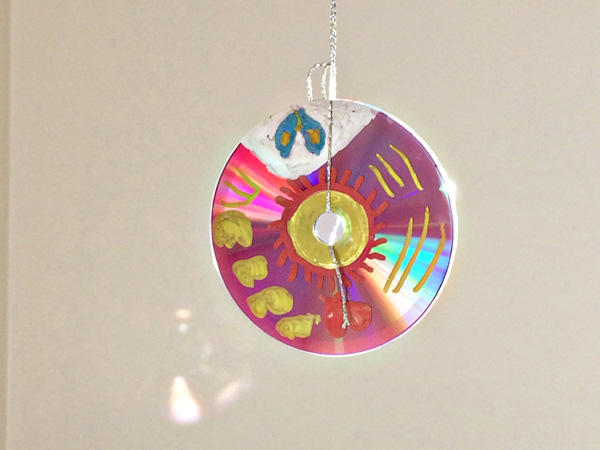
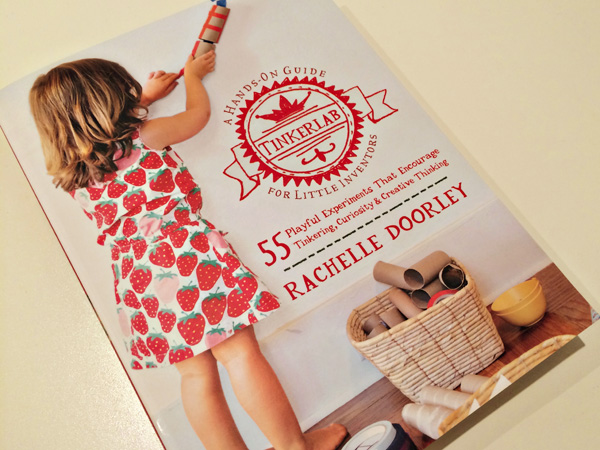
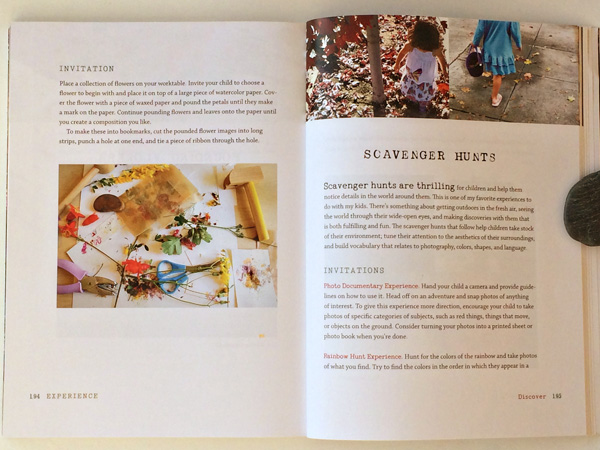
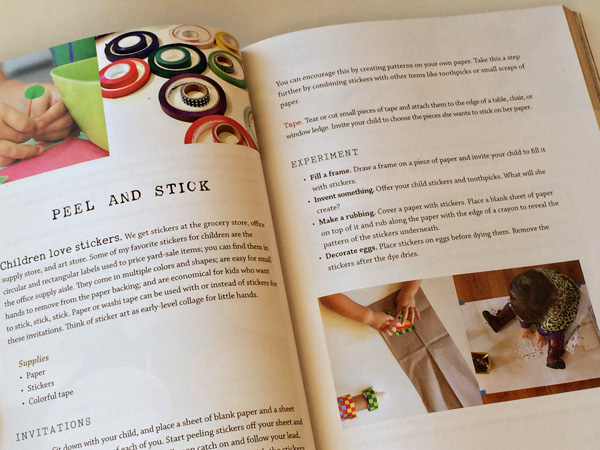
We have been experimenting with Furoshiki – a traditional Japanese wrapping cloth. We are wrapping everything lately. A favourite is wrapping up morning tea in a cloth. Once unfolded you have a tablecloth. It’s superb for wrapping gifts as the wrapping becomes part of the gift. Think scarves, pillow cases, tea-towels etc.
sticks, branches, duct tape, leaves, cardboard, random metal bits and bobs into swords and shields.
Chook has recently being ‘tinkering’ around with our big blocks and creating some of the most marvelous structures. He has discovered how to create stable structures by making the foundations as secure as possible. With this discovery he has been challenging himself to build structures that get pretty high! Of course, if they fall down, that’s pretty fun too! And I love how he has learnt to self-regulate his emotions through this wonderful exploration 🙂
My boys just took apart an old tape player. They had a great time using tools to take it apart & then explore the insides.
We recently moved from a big city in the midwest to the suburbs of the southeast. My 4 year old has always been enthralled with all things nature even in the midst of skycrapers and sidewalks. Now that we have our own yard filled with bugs, turtles, snakes, snails, etc. he has been exploring it all. He recently created a “beetle house” by filling a large plastic storage tub with dirt, branches, leaves etc to try to encourage some bugs to take up residence.
At our science center the children often choose to make webs with the plastic spiders and the wooden stumps. I add magnifying glasses and tweezers for them to practice their fine motor skills.
Flower petals..dirt/mud..pine cones…sticks…rocks..outdoor play kitchen cooking at its finest!
In my class, i like when the kids discover, experiment, and try by themself. I leave things to pick interest and let Them do the rest. They have a lot of imagination and …..questionssssssss.
My daughter has an extensive rock collection. We have just found a divided wooden box that she loves to use for sorting, organizing and displaying them. It’s amazing how many different ways she finds to sort – by colour, size, texture, when she found them, who gave them to her…
Gave my 2yo son a beaker of water with a straw in a cafe – instead of his usual cup. He had fun sipping through the straw. But then. What happens if I blow through my straw? Aha! Bubbles. Big bubbles. Oh what a lot of fun he had and he was happily blowing bubbles for a long time! 2 days later, has a smoothie at home, in a beaker with no straw. Can I blow bubbles in this? Oh yes! It’s the same way I do it in the bath! Again, much fun ensued. Great to see him making those connections between different settings, cups and drinking methods!
My 5 year old’s latest project included his magnetic building set and his electronic “scraps” where he made a “tracking device” and a new “phone” for his dad.
Our latest exploration has been with balancing seesaws with rocks which then evolved to making ramps to see the rocks roll down and how far they would go
Our latest fascination has been with the sea shore. Collecting different shells and sorting them according to type, size, color, etc.
While on one of these beach combing adventures, we discovered a live “shell”. We observed this little creature for a long while.
Next, we found crab shells, which led to a discussion on where does a crab live and what does it eat. Flipping rocks produced a swarm of baby crabs that we watched scramble to other rocks for protection….lots to discuss and explore on the ocean shore!
My 5 year old put a boc choi plant in a pot into her butterfly enclosure, to see if our captive cabbage butterflies (they are an invasive species, and have destroyed our crop (which we allowed because we enjoyed collecting the caterpillars without pesticides, so that we can watch their metamorphosis before pinning them for ourselves and our friends) will seed another cycle in there. Don’t worry, we are not re-releasing any into the wild. But it’s their choice food for the caterpillars and they will only lay eggs on this family of plants, she wants to see if they will do it in captivity.
We are visiting grandparents so our latest “tinkering” consisted of water, ice, big bowls, water pitchers, funnels, watering cans, strainers, measuring cups and spray bottles.
Not as recent, but simple ongoing favorite is our “Cutting Bin.” I keep an old ice cream container full with all kinds of things that my kids can cut. If they want to cut, they can get the cutting bin and go to work. The contents change, but some include straws, foam paper, felt, construction paper, bubble wrap, rubber bands, tissue paper, wrapping paper, fast food drink lids, napkins, fabric, etc.
“Thanks Mummy, that was great!” What a way for my 3yo to finish an activity!!! We played with baking soda, vinegar & food colouring today in a big plastic tub (Canberra is cold!!! So most activities are indoors at the moment). He loved it!!! We started with little squirt bottles of coloured vinegar which was received with many a “Wow!”. Then colour mixing began & soon additions from the vinegar bottle were requested & there were calls for “another whole ocean” (achieving bubbles across the whole tub simultaneously – that was a definite favourite)! Requests for more ‘water’ prompted discussion about the elements involved & tasting of the vinegar. Once the impressive reactivity died down, I introduced a spoon, cup & funnel. This renewed his interest & resulted in much coloured water being poured through the funnel & such concentration as he chose to fill the cup up one spoon full at a time! I love when an invitation to play really connects with their interest on a given day!!! It makes all my activity preparation worthwhile!!!
We have been tinkering with dirt, water and sticks. They usually start digging then haul over sticks, containers and the hose. They explore the dry dirt and discover that happens when water is added. They are always impressed with how their feet stick in the mud and how much it changed depending on how much water is added. This weekend they were exploring how it “plops” when tossed and how it flows and covers tree stumps.
As I preschool teacher, on of the most fun and interesting things I’ve done is to make fish prints. For our child directed study of fish, I bought a whole fish from the seafood section of my grocery store, set it out on a table with tempera paints, brushes and butcher paper. The children painted the fish and used it to make prints. We studies the anatomy of a fish, by discovering the gills, fins, eyes, teeth and so on. I paired it with the book Fish Print, which features pictures of students doing the same project.
Miss 7 had a friend over to play. They were outside for some time and then appeared at the back door with a bucket of lemons and passion fruit they had picked in our garden. “We’re going to make lemonade!” They announced. They proceeded to find a recipe for lemonade and (with a little support) set about making their lemonade. They thought the passion fruit should be used too. So they added it to their lemonade and created “Lem-Pass-Ade” . They then made signs and a money pot and set up a lemonade stand out the front of our house to attempt to raise money for their netball club. The fact that it was 5 degrees outside and we live in a quiet cul de sac did not deter them. Luckily their mums were thirsty so we made several purchases and the girls made $5 which they proudly donated to their netball club:)
My daughter loves to make little homes for her friends out of leaves, grass, sticks and sand.
It’s wonderful to get a peek into your Discovery Area, Christie! I love that you were inspired by Parul Chandra’s piece. She’s a wonderful educator and has been a big inspiration to my practice too. Thank you for being part of the book tour!
We recently read Katy Did It by Lorraine Siomades. We did a connect/ discover activity linked to the story. I put out materials – toilet paper rolls, paper towel rolls, PVC pipe, a two by 4, puff balls, plastic spoons and duct tape. My three year olds tried to make catapults like the one in the story. They needed some assistance but did make one on their own.
My LO is 2.5 years. Recently we have been tinkering with reused kcups. After emptying out the coffee, we punched holes in the cups, strung them on fishing wire and created a waterfall to play with in the bath 🙂
My 2.5 year old has been pouring and “dumping out” lately! His favorite pastime is to pour various cereals from one bowl to another. We have a set of four nesting bowls and he uses these to practice that all important pouring skill. He calls it “dumping out”, and it’s just about the only activity that will keep him quietly entertained.
My little one is tinkering in the kitchen–mixing spices, oils, and other interesting things into “soup”!
My little one has been learning the names of baby animals. He particularly enjoys going for walks in the fields nearby to spot baby animals or “family of animals” in his words. We bring an animal book and he finds the matching baby. He is in love with calfs and enjoys telling me their colours and what they eat.
Our last “experiment” was watching fava beans sprout in a glass jar and then planting them in our garden.
My son’s most recent tinkering came in the form of wood-burning. What he found was that when he marks on a piece of wood with a black Sharpie and then directs the sun through his magnifying glass onto it, it leaves a permanent burn mark (writing/designs) on the wood. He has made some beautiful pieces of art with this technique!
That’s an excellent idea!! What a clever Tinker you have. 🙂
Hello!!
I have 4 homeschooled Tinkers – 16, 8, 5 and 2, and so our home is full of never ending exploration, discovery, concocting and building! So, I have listed our day so far…!
Today my tinkerers have –
“Discovered” – that cars go faster, the steeper the ramp (with many wooden blocks piled underneath to ensure “total utter speed!”), and that their ball cars (cars that have a ball underneath instead of wheels) don’t go as fast as cars with wheels (the cars with wheels have more weight behind them as they’re bigger!)
“Build” – Relationships (!!) through fixing broken things, working on brilliant ‘ideas’ until they either succeed or fail, and through imagination as they discuss whatever comes to mind (cars, food!, engineering, sharks, motion)… I love kids conversations!!
“Concoct” – breakfast is ALWAYS where concoction begins for the day in our house! Whether it’s toast toppings, or porridge combinations, or eggs on…??!, or smoothie flavours, or juice combos, or fruit combos (!!) there is always some creative concoction going on in the kitchen EVERY SINGLE MORNING!!
“Discover” – what happens if you use a potato masher on a cake…. My tinkerers are planning this as I speak!! “What else can a potato masher mash? Strawberries?”
It’s going to be a fun, messy, full of interesting conversation, and wild experiments, day!!
Be blessed as you enjoy these precious moments with your own Tinkers!!
Bri. x x x
My little guy did a pretty simple (but fun!) experiment yesterday. When helping me add soap to our soap dispenser, he noticed bubbles in the bottom of the sink, so he ended up spending a good half hour alternately dumping soap and water into the sink, swishing it around to make bubbles, picking the liquid up with a cup and dumping it into the sink (and everywhere!), and rinsing the bubbles down the drain. It was a mess, but we had the loveliest time!
Our library loans out a wooden marble track to patrons and my 4yo is in love with it–how I wish they weren’t so expensive. But every time we’ve borrowed it his structures have become more elaborate, and this week he started adding implements from the house to introduce probability to his tracks. Sometimes the ball will go one way but there is an uncertainty about which other paths it might ‘choose’ and that has added a whole new level of discovery and unpredictability for him!
We just finished making ice cream. While it was still churning we decided to add mint chocolate chips. Then my daughter ran into the backyard with her scissors and came back in with mint. She used her scissors to chop the mint into the ice cream maker. The result wasn’t what she was hoping for though. The mint leaves weren’t chopped very small so it tasted like vanilla ice cream with the occasional mouthful of leaves. Nevertheless, a good experiment.
Just today, we were talking about light and shadows and we took a nature walk. I happened to have sun-print paper and we chose items from our walk that we could use as prints. This gave us a way to talk about light and how light goes through some things and is stopped by others. When light is partially stopped by another object, it seems darker to us and this is what we call a shadow.
We made elf/gnome houses today with all kinds of materials. I think my boys could have worked on their projects for hours!!
Thanks for the opportunity to own your book! We’d just come across your book for the first time at our library two weeks ago, and I’m so very happy to have found it. Our entry: we have a summer camp for stuffed animals every summer. My daughter is the “counselor” and we plan activities (fire dept tours, mud pie making, local farm trips) and clubs (water science club, yoga club, arts and crafts) which completely fill our days with fun. We add in a good dose of good-doing (litterbug parade neighborhood clean-up, lemonade stand to fund donations to animal shelter, generally being silly and passing smiles onto people we run into each moment). We have a camp song, we roast marshmallows and have a tenting camp out at the end. And it’s all based on using what we have on hand without consuming extra goods or spending a penny the entire camp session. (One summer we didn’t even use the car– walked everywhere with a wagon of stuffed campers.) Good old fashion fun. This summer we have added STEM Club (science, tech, engineering, math) for two reasons: my daughter is totally interested in this part of her brain, and I want to foster opportunities for her to explore her abilities and passion in STEM areas, and know females are as strong as males in these fields. And so, back to the entry(!)– my daughter’s latest tinker has been to create a slogan for this summer’s camp tee-shirt (to give to the stuffed animal’s owner). Her design is a tall, sturdy flower and the phrase, “I am beautiful as a flower, strong as STEM.” And she does most of her inventing and tinkering in poofy dresses. Love this kid! Thanks again.
Love the idea of stuffed animal campers! So cute!
Making salad with weed and playing with toy truck in dirt
My daughter and her friend discovered that if you throw a flower into the water on one side of a bridge it will come out the otherside. Also if you put cotton candy in the water the fish will eat it up like crazy!
We have been doing a lot of arts and crafts projects lately with my 2 year old boy/girl twins, Avett & Coda Belle, but my favorite is when they make up their own games! Tonight while having a dance party in their room before bedtime, Coda Belle started choosing books off of the shelf and making “walkways” to different areas of the room to dance in. She also incorporated her blankie, as well as her brother’s blankie which seemed to be her idea of a “safe pad” (ie. tickle free zone). She would dance a little in one spot, walk carefully across the path to her next “stage” and dance for a bit, and then walk to another. It is so cute watching them create their own games with each other!
Mine has taken grasses and sticks and made a little tent/hut for his play dinosaur.
At our preschool, kids tinkered with pendulum painting with lovely results. This is accomplished by suspending an inverted cup or can with a small hole in the bottom over a large sheet of paper. (We recycle architect paper.) Add paint to the cup. Set the pendulum ‘paintbrush’ in motion and watch the magic! Creations are reminiscent of the Spirograph of yesteryear.
My son’s last experiment was tasting a rock- he is two lol and was trying to figure out what it was. He also tried to give some to the cat and dog as a snack but that didn’t go over well. He did feed the dog some grass and then decided to try some out too.
I knew she had out the “all natural” food dye, but I was surprised to learn that she had squeezed all ($12) of them into a bowl. She then poured in a little water and a little baking powder and POOF, it somehow turned into a volcano of color. We bottled it in tiny flasks and told her it was a Lucky Potion. Since then she has believed herself to be extremely lucky.
Taking pieces of a wood car kit and rearranging the pieces into a completely different kind of vehicle.
My 2.5 year old daughter has been experimenting with objects and sound in the last two weeks. It all started when her dad and I read her Blueberries for Sal by Robert McCloskey. Half-way through the book I grabbed a tin pail, 4 blueberries and a separate container full of blueberries. We stopped the book and let her drop a blueberry one by one into the tin pail to experience the same sound “Sal” did in the book “Kerplink, Kerplink, Kerplunk” – she loved it and we told her she could eat the blueberries. Next I filled the tin pail with blueberries and asked her to drop a blueberry in to hear the sound. Our daughter was amazed there wasn’t a sound! We finished reading her the book while she enjoyed the blueberries. For the last 2 weeks she has been dropping different objects into various containers like her fork into a big bowl and dried pasta, beans, dolls, everything she can find.
On our recent campervan holiday my daughter discovered limpet shells in the rock pools by the beach, we since used them to design necklaces as a reminder of our holidays : )
We made homemade gak earlier this week and it has been played with every single day by my girls. They enjoy pressing objects into it to make designs, cutting it with their (dull) knives and seeing just how far they can stretch it.
My 6 year old and I have been looking at structures and shes been creating towers with different materials. Her favourite was with dry spaghetti and marshmallows. We also made a working catapult with skewers, marshmallows and elastic bands…inspired by tinkerlab. My 2 yr old has been exploring themed treasure boxes with coloured rice and various implements to pour, etc.
In my room the children have been experimenting with colours, we have done lots of mixing to see what happens when we combine two or more colours together. Although the favourite experiment I think was swirly colours, we not only use a clear bowl with milk in for this experiment we also use a clear bowl with water. We dd the colours to both bowls to see the reaction and to investigate if the colour react the same in water and milk, and what happens when we add the dish washing liquid. Lots of interesting ideas and thought processes related to the reactions that occur.
We’ve designed, built and used solar ovens, making the most of the good weather here in the UK and enjoying this activity with friends
We made s’mores, we’ve timed the melting process, we’ve compared in shade in sun, we’ve tried lid closed, lid opened, we’ve used chocolate from the fridge and chocolate from the cupboard
We’ve eaten plenty of chocolate 😉
We have been experimenting with colurs-mixing different colurs with milk/oil/shaving cream and viscous liquids like honey.It is fascinating to look at the different results and my 5 year old has added her twist to this with looking at colurs made by different spices,for eg-turmeric/paprika.We do remember to wash our hands after and not to rub eyes.We have also tried our hand at tie and dye-dip dyeing old t shirts in the bath and making herb/fruit ice cubes.
My 4 year old daughter loves to design and draw maps, and this week she has been drawing self portraits and portraits of her sister. My 6 year old daughter loves to discover what is in the sand at the beach, she knows to be careful when she finds sharp glass.
My four year old daughter has been mixing mediums in her arts lately and seeing the affects of using multiple ones in one piece of art. I’ve been enjoying seeing the outcome and love the ideas she comes up with on her own.
Just yesterday, when my two year old granddaughter asked to paint, I set up a table project for her. I set out a cookie pan, cotton swabs, cotton balls and a feather along with a muffin tin filled with different colors of paint. Within seconds, she was dipping and dabbing the paint all around the cookie pan. Colors were mixing and mingling and she was enjoying making swirls, lines and zigzags. After some time, she was using her hands to spread the paint and I began dropping paint straight onto the pan. Then we pressed a sheet of paper onto the pan. Because her hands (and legs and face) were covered with paint now, as she pressed the paper into the pan, more interesting designs emerged. Then we lifted the paper and a beautiful one-of-kind monoprint occurred! This continued until we ran out of paper!
Go outside find a sidewalk or driveway, write names with chalk, using a spray bottle with water and have children spray away their names. It is a wonderful fine motor exercise, name recognition, letter identification and they looks on their faces when the letters disappear is adorable!!
Hi! I am super excited about this giveaway! I have seen this book at stores and have been wanting to get it for our little. She has just turned 2 and has begun exploring the work through her little eyes and it is so great to watch. Her recent discovery was painting with water on our chalkboard wall! She seems so amazed at how it changes colors but then dries and goes away. It is such a joy to watch!
We have been experimenting with kool-aid and baking soda. The smell of vinegar does not sit well with me and therefore I had to find a different means of fizz. We have done science with what will happen, art, with painting with our science experiment and sensory, as when you use the products as paint it drys rough and we love feeling it, scratching it, and smelling our art work (yes, seems odd) afterwards! I love that we can get more than just ONE ‘center’ out of the project!
My little one has played with glass pebbles, putting them into jars and pouring them into various containers. Trying to figure out whether all that were in one container fit into a different one. Doesn’t always work and then she needs another one. She started to try and close the screw top and open them putting the glass pebbles in and pouring them out.
My kids have been making mud pies with chicken feather “candles” this week. Last week it was stick nests lined with milkweed fluff.
My 6 year old checked out a book from the library on the Wright Brothers, and he loved their toy helicopter, or “bat”, that they played with as children and the images of their early gliders. So, last night before going to bed, he drew a design for his own toy glider, and made a list of needed supplies: cardboard, toothpicks, twine, etc. He plans to build it on our vacation and wanted to store his plans in a place where he wouldn’t forget them. He put them in his underwear drawer.
Build. My daughter has been building with leftover boxes of late. She started out with a boat, but it has morphed through several iterations on ‘inventions.’
My son has been very interested in volcanoes. So he used a cardboard box, rubber bands, tape, glue, and markers to create a “thermometer” to test the lava that flows in his imaginary volcanoes!
Velcro rollers on felt board! I stuck velcro (hair) rollers on a felt board in our centre this week and the children are loving them! I put out 3 sets of rollers with 5 different sized and coloured rollers in each set. It’s great to see toddlers simply removing and resticking the rollers to the board. Preschoolers venture into sorting by colour or size and some just make pretty designs with the rollers. It’s a great use of rollers that rip the heck out of my hair!
I bought a $0.50 alarm clock from a garage sale and told my 6 year old son to take it apart. He is now a pro at using a screw driver, wire cutter and pliers. He is taking time to use his magnifying glass and tweezers to closely examine the smaller pieces. It was the best 50 cents ever spent.
My son, along with the help of his co-workers, invented a makeshift ‘crane’ to lift some heavy materials at work using an old repurposed motor, some cable, and pulleys.
My boys have been making crystals lately using a cup of warm water, salt, food coloring, and sunshine. We also brought in various colors of soil from outside and painted with it. They turned out beautiful!
We have had recent rain (lots) and thus lots of discovery of worms, learning that slugs although like snail are different – learning about the differences, discovery of all our seeds we planted are now coming up, finding out what our chickens are so excited about (happy mum they eating the slugs and snails) hearing the happiness of frogs from all the rain.. love watching the discovery and learning through childs eyes..
I am in Tasmania, Australia. My two little boys aged 2 and 5 years have been recently tinkering around outside designing environments for dinosaurs. They carefully gathered a large base of a planter box and set up logs of various sizes and lengths and collected leaves, bark, twigs, pine cones, gum nuts and pieces of native fern to create the habitat along with pebbles and stones and a section for a pond. It was great to see them working cooperatively and sourcing their materials from nature. It was even lovelier to hear the rich conversation from our 5 year old who said ‘Look mum, the dinosaur is camouflaged in there’. This is evidence that children learn best when given the opportunity to explore, discover and create their own play experience in an environment that supports and encourages their independence and capabilities. I just adore watching my children learn and grow and develop new understandings. Children really are curious and capable xx